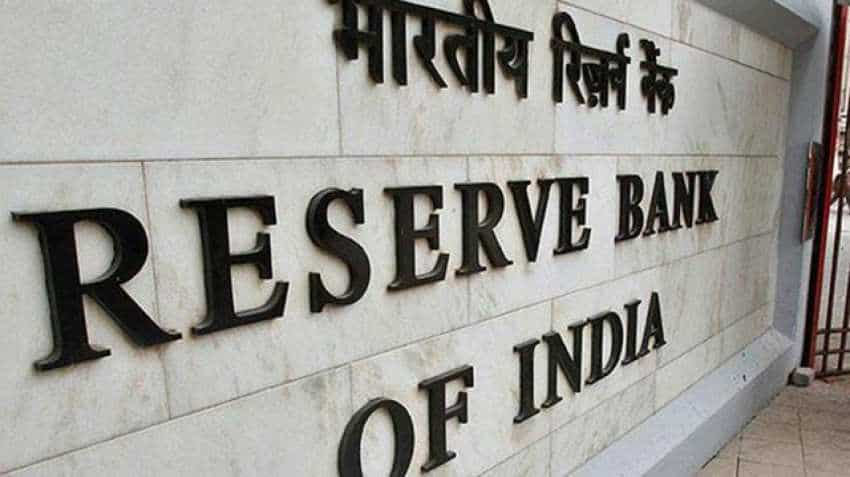In a first since 2008 crisis, disbursals to steel companies drop 6.5%
Loan disbursals to steel firms by banks have turned negative for the first time since the 2008 economic crisis amid rising hopes of revival seen by Reserve Bank of India (RBI) and rating agencies.

Loan disbursals to steel firms by banks have turned negative for the first time since the 2008 economic crisis amid rising hopes of revival seen by Reserve Bank of India (RBI) and rating agencies. The latest RBI data, analysed by DNA Money, shows that annual loan growth for the steel companies fell 6.5% for the 12 months ended June 22, 2018.
The disbursal dropped by Rs 20,800 crore to Rs 3,00,500 crore for the year ended June 22, 2018, against Rs 3,21,300 crore disbursed to the sector in the preceding year. The steel sector has never seen negative loan growth in recent years.
Interestingly, the loan cut comes at a time when RBI sees a rebound in the steel sector.
Its latest Financial Stability Report, released on June 26, 2018, said, “There has been an uptick in capacity utilisation with some industries such as steel closing the gap”.
The credit freeze is even pronounced in the fiscal 2019 data. For the March to June 2018 period credit growth to the sector was negative 7.5%, showing that given the high NPAs in the sector, banks have virtually closed their doors for lending to steel companies this year.
However, just last year, the disbursal in 2017 was 4.1% more than in 2016.
In 2015, Indian steel companies had around Rs 3 lakh crore debt on their books, which was almost 15 times consolidated operating profit of the sector. Banks pumped 8.2% more money in 2015 over 2014, which saw disbursals rise 6.4%.
Interestingly, in 2013, when banks had all the reasons to worry about the steel sector, the credit growth in the sector was a record 19.2%.
Steelmakers are complaining that banks are not disbursing even the sanctioned loans.
Rita Singh, chairman, and managing director, Mesco Steel, said, “The banking sector is taking a long time to take decisions regarding companies like ours, which are in Rs 1,000-2,500 crore turnover. We bought a stressed asset in Odisha on the promise that banks will provide us with funds to make the project viable.”
Watch this Zee Business video here:
“We have been paying interest and taxes since last three years on the loans sanctioned to us. But the banks have still not released all the funds, making it difficult for us to keep the plant operationally viable,” Singh said.
Meanwhile, greenshoots are sprouting in the steel sector. On August 11, 2018, RBI analysed the financial performance of 3,096 listed non-government companies and announced the revival of the steel sector.
“The manufacturing sector’s sales growth improved significantly in 2017-18, led by iron and steel,” the central bank said in performance review report of private corporate businesses.
Similarly, India Ratings, the local unit of Fitch Ratings, has estimated that operational performance of steel companies remain active in the remainder of fiscal 2019. “In view of a robust steel consumption demand, aided by government spending on infrastructure and housing and a modest recovery in private capex cycle. A likely improvement in capacity utilisation rates would result in an improvement in operating profitability, due to better absorption of fixed costs, amid steady sales realisations during FY19,” said Prakash P, analyst with India Ratings.
The total exposure of the steel industry stood at about Rs 3.20 lakh crore, out of which gross NPAs were about Rs 1.15 lakh crore (37%) as of 2018.
Top five debt-laden steel companies owe Rs 1.4 lakh crore to banks and currently facing insolvency proceedings.
The steel industry was buffeted by crises after the economic crisis of 2008 when all investment avenues dried up. The government had asked public banks to fund and sustain the core sector of infrastructure. The misuse of funds and global price correction, especially the Chinese low price strategy, pushed the steel sector along with lenders, especially public banks, in trouble. Failure to invest now in steel capacities would result in increasing dependence on imported steel, which will cost more at the time of lower Indian rupee, according to experts.
India has committed to invest about $94 billion in infrastructure in 2020, primarily in the steel sector.
Source: DNA Money
Get Latest Business News, Stock Market Updates and Videos; Check your tax outgo through Income Tax Calculator and save money through our Personal Finance coverage. Check Business Breaking News Live on Zee Business Twitter and Facebook. Subscribe on YouTube.
RECOMMENDED STORIES

Looking for short term investment ideas? Analysts suggest buying these 2 stocks for potential gain; check targets

Rs 3,500 Monthly SIP for 35 years vs Rs 35,000 Monthly SIP for 16 Years: Which can give you higher corpus in long term? See calculations

SCSS vs FD: Which guaranteed return scheme will give you more quarterly income on Rs 20,00,000 investment?

SBI 444-day FD vs PNB 400-day FD: Here's what general and senior citizens will get in maturity on Rs 3.5 lakh and 7 lakh investments in special FDs?
09:38 AM IST










 SBI writes to RBI to consider non-financial transactions as well for tagging an account as operative
SBI writes to RBI to consider non-financial transactions as well for tagging an account as operative Banks should adopt 'bottom-up' approach for preparing credit plan: RBI's Swaminathan
Banks should adopt 'bottom-up' approach for preparing credit plan: RBI's Swaminathan RBI lifts restrictions on Sachin Bansal's Navi Finserv
RBI lifts restrictions on Sachin Bansal's Navi Finserv India's services exports rise 22.3% to $34.3 billion in October, as per RBI data
India's services exports rise 22.3% to $34.3 billion in October, as per RBI data  RBI working to create robust data analytics ecosystem: Dy Guv Swaminathan
RBI working to create robust data analytics ecosystem: Dy Guv Swaminathan